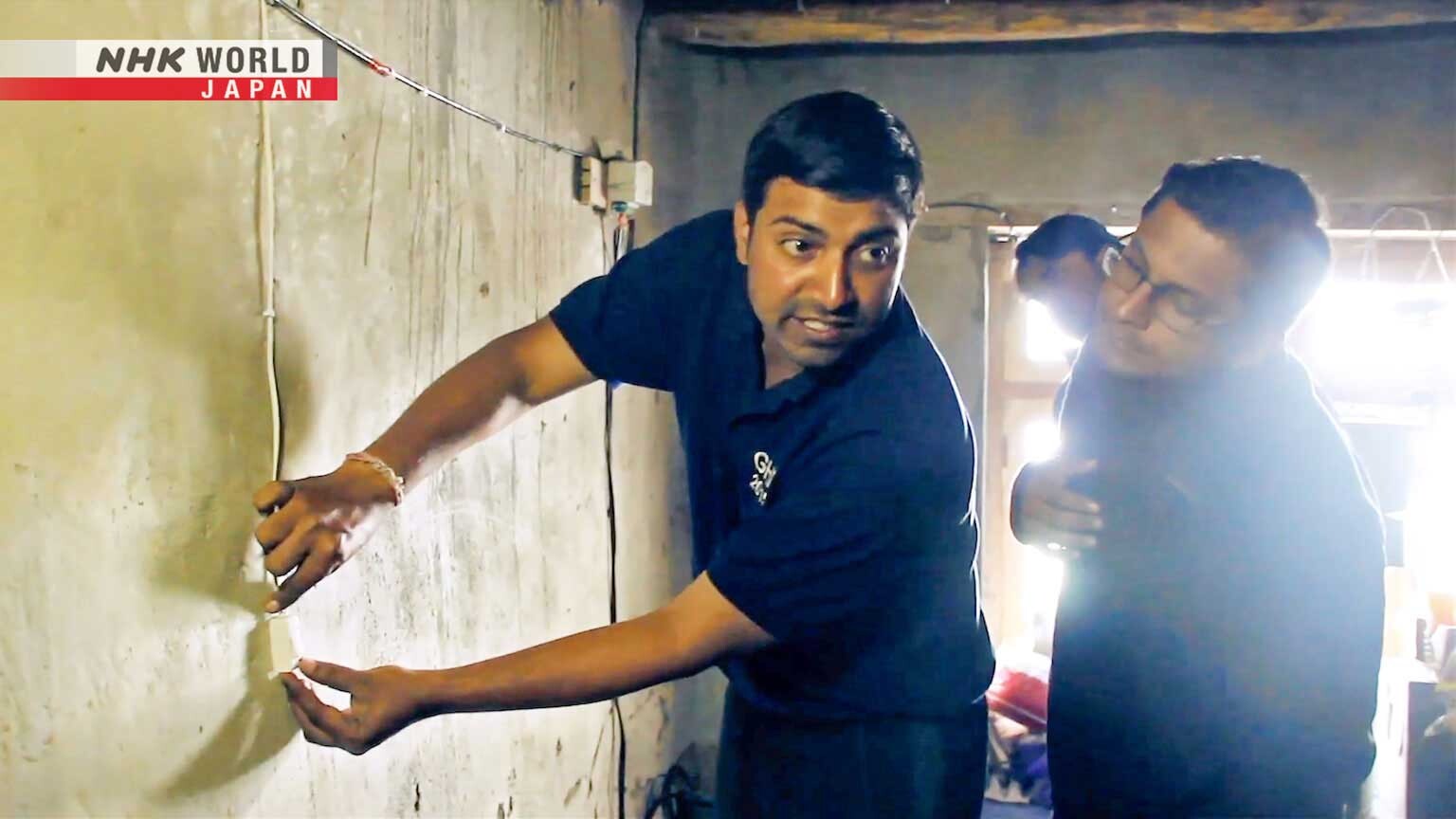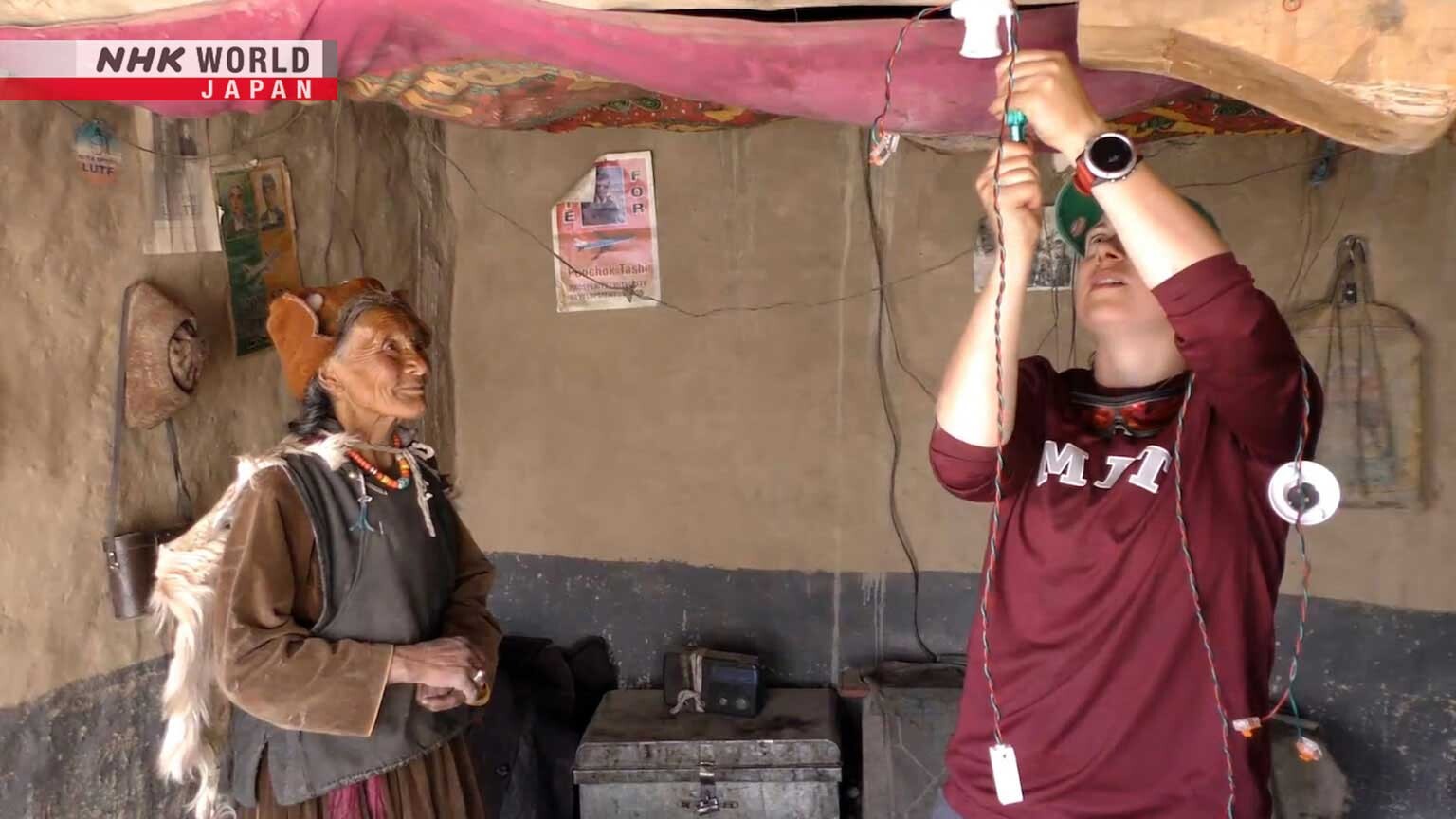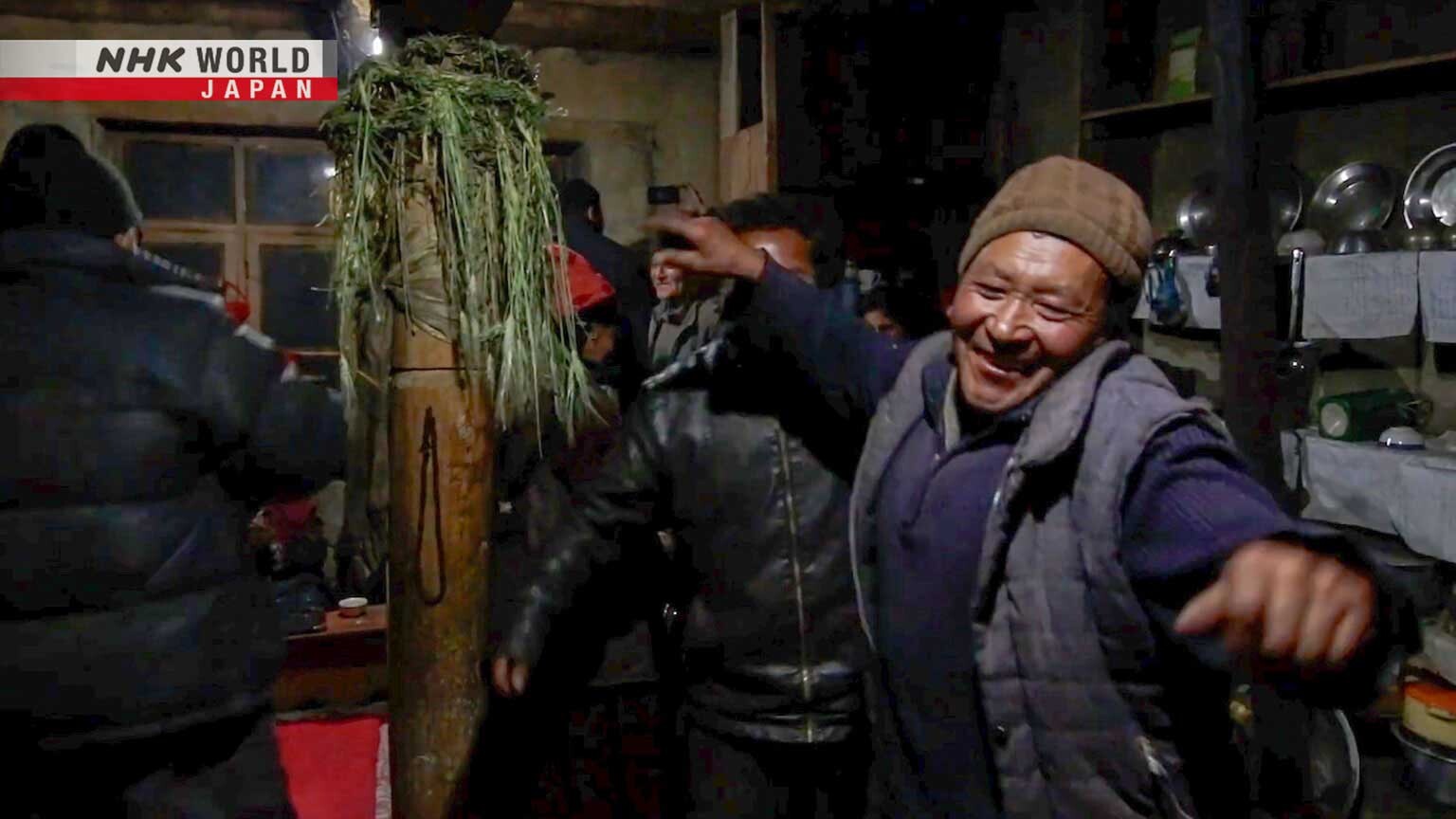Tourism Brightens the Future: Paras Loomba / Founder of Global Himalayan Expedition
Introducing the CEO of a company promoting eco-tourism by guiding travelers to the Himalayan Mountain region. They install solar power systems, supporting local energy needs for the community.




Transcript
Direct Talk
The Himalayas, the roof of the world.
Here, stand the earth's tallest peaks.
The harsh environment means
residents of the many villages in the region
live without electricity.
But Indian engineer, Paras Loomba,
decided to take a stand.
Paras Loomba
Founder, Global Himalayan Expedition
He has chosen unusual tools
to help electrify the Himalayan region—
tourism and experience package tours.
His tours have attracted the attention
of travelers from across the globe
who are keen to give villagers
a hand in electrifying their lives.
Everyone wants light.
I think electricity is a basic human right,
like clean water.
That is what the first step of development.
Ready?
Paras provides illumination
in an effort to eliminate
regional disparities around the world.
Tourism Brightens the Future
In recent years, the tendency has been
for developed countries to be the focus
for creating sustainable societies through
decarbonization and natural energy.
However, over 10 percent of the world's
population is said to be without electricity.
Today, there are more than 500 million people
without access to electricity
in the whole world.
500 million people.
Furthermore, the fuel burned to provide light
damages the environment and people's health.
The stop of fossil fuel.
When the light comes in,
they stop using kerosene oil
because kerosene oil is
very, very dangerous to health.
So when they used to burn
kerosene oil for the light,
the lamp, it used to be
very bad for the health.
So the light, first of all,
had a very good health benefit.
And also, the light, it has brought
a lot of economic benefits.
And it has brought money to the villagers,
and which is very, very important.
So, Paras began installing
solar panel systems in 2013
to electrify mountainous areas.
The key is that he also includes
tourists in his endeavor
which boosts sustainable tourism.
We wanted to launch an expedition
which was very unique.
The solar and tourism is together,
it started together.
Not tour expeditions but energy expedition.
Mostly the tour operators in the world,
they only do tourism,
they don't do impact activity.
So we were combining impact
and tourism together to form
a new model of tourism.
And today when people talk about
sustainable tourism and eco-tourism,
we were doing this 11 years back.
We were already doing that.
We'll go to a remote valley,
a remote village and electrify a village.
And you also see Himalayas.
So it's a combination.
So person coming on expedition,
he sees the region as a tourist
and he also does an impact activity.
So it's a combination of both.
And because I was an electrical engineer,
I already had knowledge of solar engineering
so for me setting up a grid was easy.
To date, Paras and
his enterprise have succeeded
in installing solar power systems
in over 200 villages
and illuminating 130 thousand lives.
Paras Loomba was born in 1985
in Pathankot, Punjab, India.
My father was an Indian military officer.
So, I was born in an Indian cantonment.
And Pathankot is a very small town,
basically a military station
very close to the Himalayas.
Especially when you're in army family,
when your father is in military,
you don't stay in big cities.
My father was never posted
in Delhi or Mumbai or Bangalore.
We were in remote areas.
I was always interested in science.
When I was a kid,
I saw these big military vehicles.
They had these big missiles
and these rockets and everything.
So that was the one of the reasons
to do engineering.
I said I want to build a rocket,
or go to space, or
you know, that was the fascination.
Paras majored in electrical engineering,
and upon graduation,
he secured a job as an engineer.
At age 26, he faced a turning point.
So, in 2011,
I saw a documentary on TV.
And the documentary was about a person taking
youngsters to Antarctica, to South Pole.
I always loved the mountains.
I loved ice. I loved snow.
And it was always a dream
to go to Antarctica, you know.
I always wanted to go to
the North Pole or the South Pole.
I said, it's a good opportunity.
I took a leave from my company for one month
that I'll go to Antarctica.
In March 2012, Paras departed on his adventure.
This was my first trip to outside India.
So it was a dream come true.
We spent almost a week
in Antarctica in different islands.
We were taught on
climate change, sustainability.
We had 70 people from
all over the globe who I met.
I was 26, 27 years old.
At this age, if you travel to this far,
it always inspires you.
So I was very, very inspired
when I went to Antarctica.
So when I came back,
I said, it is a small life
and what I saw at 27 years of my age,
if I can do something for my own country
or something for the people
living in remote areas
that would be really, really nice.
So, the idea struck me that
like an expedition to Antarctica,
if I can do a similar expedition
in the Himalayas.
But not just showing things but doing things.
It lead to the creation of
Global Himalayan Expedition.
So, it took me one year to understand
what I need to do in my life, next.
Paras quit his corporate job and
began working hard toward his goal.
Installing solar panels in the
Himalayan mountain villages was no easy task.
It required money and
a means of transporting the panels.
So, Paras hit on the idea of attracting
helping hands from around the world,
and what better idea than
to tap into the tourist industry
to fund the initiative as well.
The tourists would help the villagers
transport the solar panels.
In return, the villagers
would host them in gratitude
for their assistance in installing them.
A win-win situation.
More than 1,300 tourists
have participated, so far.
We choose a village which is far,
very far.
Because if we choose a village
which is very close by,
even the government will be able to do it.
We take a village which will take
many years to get light.
We find the remote village.
Some of the villages are
not even on Google Maps.
So if you go on Google, you put the name
of the village, you will not find it.
It's so remote.
Even the satellite hasn't,
doesn't know where the villages are.
This meant that accessing
the villages was grueling.
Telephone connectivity
is difficult in the mountains
and the weather is unpredictable;
danger is a given.
It was a 14-day expedition.
People would come from
all over the globe for 14 days,
and spend time with us.
In these 14 days, three or four days
will be utilized to electrify a village.
The rest of the days will be used to talk
about culture, sightseeing, everything.
So our expedition is a very niche expedition.
It's not like a general tour.
It's a very special expedition.
We first tell the people about the culture.
I may be saying sightseeing,
but it is not only sightseeing.
It is about discussions, workshop,
and a bit of travel, and then
finally going to a village.
We don't immediately go to a village.
It's interesting,
we don't have a marketing strategy.
We have been very, very fortunate
that the people who came on the expedition,
they promoted our expedition
in their own country.
So we have only one website
and we don't run any ads.
It is word of mouth.
Mostly from Europe and US.
We have also had people
come from Nepal, from South America.
This has undoubtedly been
one of the most amazing and
authentic experiences of my life.
Yes, the electrification itself
was just unbelievable
to see the joy that we brought to the locals,
to share with them a moment that
has such a significant impact in their lives.
It's not only that we're bringing
electricity and light here,
but I think we're bringing
a lot of new opportunities,
opportunities for the villagers
to improve their way of life,
improve their health,
improve their access to education,
perhaps have more tourists come here.
Because I think up to now,
we're one of the very few people
that have come to this village.
And you won't believe, in 2015,
we had one person who came from Peru,
from South America.
He came from the mountains.
He saw how we electrified a village.
After the expedition, he went back to Peru
and electrified four villages
in his own country.
So that was, he got inspired that
I can bring light to my own people.
So we had one guy who came from Nepal.
He went back to Nepal,
he electrified his school.
So the people who come, they also go back
to their own communities and they contribute.
That is the impact of our expedition.
However, will the electrification
directly reduce global inequality?
What do the villagers themselves
think of Paras' scheme?
Earlier it was very difficult as
we had to use kerosene oil lamps.
And today due to your generous gift solar light,
we can gather in this big assembly hall at any time.
Without any difficulty of power cuts
while reciting daily scriptures.
We are all anticipating to see our village
light up like never before, by the grace of God.
We are waiting for it to become dark
so that we can enjoy the lights.
We are overjoyed.
Ready?
That is one reason
that we survived for 10 years.
The happiness.
The smile on the faces.
So when they electrified the first village,
they switched on the light, they were dancing.
They danced for five hours.
And there was a very old person.
He was 82 years old.
And he said, I've never seen
electricity in my life.
So, he saw the light for the first time.
Then he gave me a nice cheers
with a local tea.
So it brought the village together.
A lot of happiness.
I think electricity is a basic human right,
like clean water.
So we have never heard from anyone
who says we don't want light.
Because everyone wants light. Because
that is what the first step of development.
So the light, it has brought
a lot of economic benefits.
And it has brought money to the villagers,
and which is very, very important.
When we give them electricity.
Electricity is different,
lighting is different.
Lighting, I can give one solar lantern
and say we have given you light,
but we give electricity.
With electricity, you can have light,
you can play a TV,
you can charge your phone.
So that is the big difference.
What we have seen is that
once we give them light,
their life doesn't change
in one day or one month.
It takes one or two years for them
to adopt to the new thing.
If we give them basic infrastructure,
these people will not migrate.
So we can stop migration.
They will stay in these villages.
One day the road will come.
One day the grid electricity will come.
One day water will come.
One day tourists will come.
And when tourists come to these villages,
automatically there will be livelihood.
They will create some income.
So they will stay there. So that is the idea.
Our goal is to empower as many people.
Be it in India, be it in Southeast Asia,
be it in Africa, be it in America.
Whatever we can do.
But we want to do it in a sustainable manner.
Today we electrify the village.
After 10 years, that village should grow.
So, what is Paras Loomba's life goal?
My life mission
is to provide energy access
to all the remote communities
of this planet Earth.
Simple.